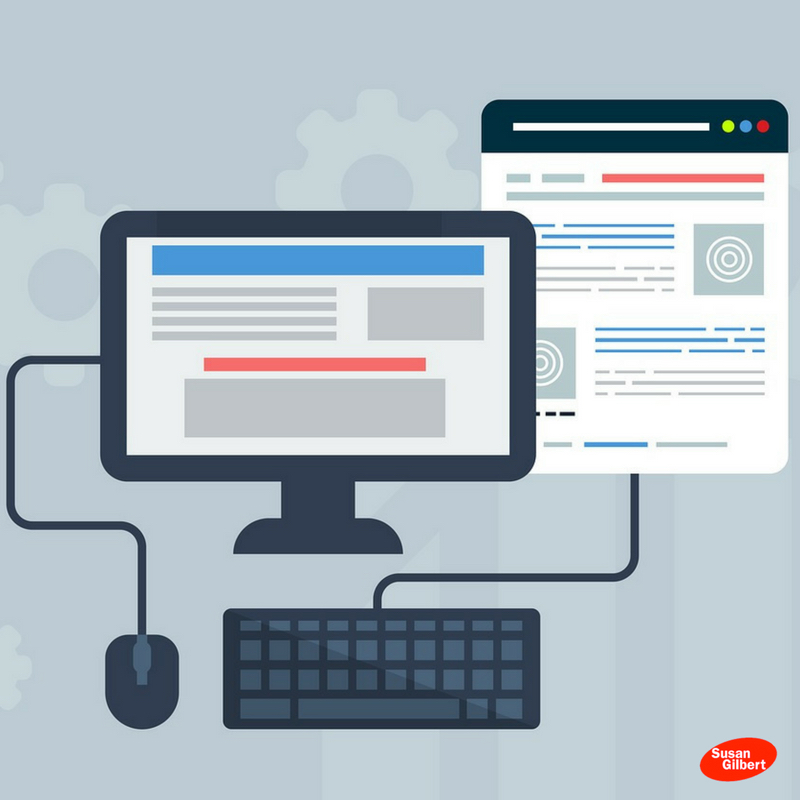Read This Before You Update Your Website to WordPress 5.0
 WordPress has been the top platform to have a self-hosted a mobile-ready website that can be fully customized from thousands of different themes and plugins. Since 2003 there have been numerous updates and this summer we will soon see the release of WordPress 5.0.
WordPress has been the top platform to have a self-hosted a mobile-ready website that can be fully customized from thousands of different themes and plugins. Since 2003 there have been numerous updates and this summer we will soon see the release of WordPress 5.0.
The biggest change is the integration of Gutenberg technology, which will no longer require code. This format will utilize blocks instead of the standard editor we have seen. WordPress explains it this way:
These content blocks transform how users, developers, and hosts interact with WordPress to make building rich web content easier and more intuitive, democratizing publishing — and work — for everyone, regardless of technical ability.
So why has WordPress decided to move into a rich content direction? Currently shared hosted platforms like Weebly, Squarespace, and Wix have been growing in popularity with their simplified drag and drop features and effortless editing.
Instead of the traditional WYSIWYG editor the blocks format will mean breaking your editing palette into different sections. For example, one block would be for the headline while another for your main content, images, ect. If you update these on another page that uses the same items then editing will apply to several pages at once. This also makes editing of columns more simple as you will no longer need to tweak any code.
Right now the new feature is a plugin in beta release to try out. Once fully launched, website owners will be able to revert back to their classic editors. This enables an easy transition to the new format.
In the meantime, here are a few ways you can prepare for the update before it becomes official.
1 – Test out the WordPress 5.0 plugin
WordPress is still getting feedback from users on the new content format, which can be downloaded as a plugin here. In order to work out the bugs a support forum has been set up where users can submit their feedback and help the developer improve before the final release. You can find a lot of questions and answers in the forum, if you find yourself getting stuck. Once installed, you can still use your classic editor and test out the new Gutenberg format. This will also be visible in your Dashboard menu so that you can switch back and forth. It’s very important to use this plugin if you have multiple clients with websites. So that you can help prepare their installations and guide them through the new format.
2 – Download and install the classic editor
It is just a matter of time before Gutenberg becomes a permanent installation — to be ready you should install the Classic Editor and enable this before you upgrade. Once active, you can configure this to revert back to the classic mode. Doing this could prevent you from being hijacked by the new block format.
3 – Create a test only or staging website
As with any new installation you will need to create a staged version of your website. This may require the help of a developer who knows how to set this up. This provides a safe environment to fully test out the new version without impacting your current WordPress installation.
4 – Keep up to date with plugins
A lot of plugins are free and the developers may not be prepared or ready for WordPress 5.0. It’s important to update these frequently and watch for any that are not compatible with the new system. If you encounter any errors this will enable you to know which ones are causing the problem.
5 – Perform frequent backups
This will be one of the largest updates in a long time. So it will be good practice now to perform backups of your current WordPress installation frequently. There are many good plugins that work well for this including BackupBuddy and BackUpWordPress, which is a free plugin. You will also want to perform health checkups and website audits to ensure all of your code and functionality is up to date without any issues.
6 – Use a well supported theme
If you have a free theme installed you may want to consider purchasing a professional version from brands like StudioPress, ThemeForest, and Astra. The most commonly used ones will be performing frequent updates in order to keep up with the latest change.
7 – Download the Gutenberg handbook
Thankfully WordPress has put together quite a bit of support documents to help you better understand WordPress 5.0 new update. Their online documentation covers a detailed explanation of what Gutenberg is in detail. It also details the code language that is involved, API for blocks and the function and use of blocks. If you would rather take a look at a more illustrated guide then the CodeinWp blog offers a great resource for this.
As website development and software moves forward into the future in the face of new technology such as AI and mobile we should expect to see these types of updates more not only on WordPress but other platforms as well. The user-friendly rich text option has become the new way to create and publish content. There will be bumps along the way as expected. Only time will tell whether this will be the new normal for WordPress or not.
If you need assistance with any of the above tips, my company and I are here to help. Contact me today for a free 30 minute consultation to evaluate your current website or to develop a new one.


0 Comments